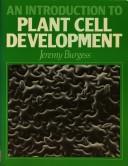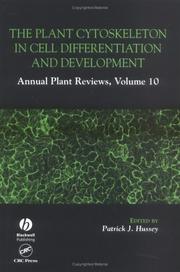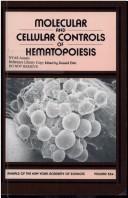| Listing 1 - 10 of 15 | << page >> |
Sort by
|
Book
Year: 2019 Publisher: Frontiers Media SA
Abstract | Keywords | Export | Availability | Bookmark
 Loading...
Loading...Choose an application
- Reference Manager
- EndNote
- RefWorks (Direct export to RefWorks)
This Research Topic honors the memory of Prof. Antonius “Ton” G. Rolink (April 19, 1953–August 06, 2017), our colleague, mentor and friend in immunology. It is now over a year since Ton left us. This article collection, authored by many of Ton’s friends and colleagues, reflects the huge contribution to cellular and molecular immunology that work emanating directly from Ton’s own hands and laboratory have made to the understanding of lymphocyte development. Ton’s hard work, expertise, generosity, passion for science and infectious humor were legendary and for all of those lucky enough to have been his colleague, he ensured that science was fun. We take this opportunity of thanking all contributors for submitting their manuscripts; we are sure that Ton would have enjoyed reading and making his own insightful comments on them. In the form of original research and review articles, these papers cover many of Ton’s scientific interests in different aspects of lymphocyte development in mouse and man. In the first section, Development of hematopoietic cells and lymphocytes, Klein et al. describe the accumulation of multipotent hematopoietic progenitors in peripheral lymphoid organs of IL-7xFlt3L double transgenic mice and Pang et al. the role of the transcription factor PU.1 on the development of Common Lymphoid Progenitors. In Early B cell development, Winkler and Mårtensson review the role of the Pre-B cell receptor in B cell development and papers by Hobeika et al. and Brennecke et al. describe models of inducible B cell development. For B cell selection, survival and tolerance, Smulski and Eibel review the role of BAFF and Kowalczyk-Quintans et al. analyse the role of membrane-bound BAFF. The impact of BIM on B cell homeostasis is discussed by Liu et al. The role of the MEK-ERK pathway in B cell tolerance is discussed by Greaves et al. and the transcriptional regulation of germinal center development is reviewed by Song and Matthias. For Hematological diseases, Ghia reviews how studies of B cell development help the understanding of Leukemia development, Kim and Schaniel review how iPS technology helps the understanding of hematological diseases and Hellmann et al. describe development of new therapeutic antibody drug conjugates. Finally, in T cell development, homeostasis and graft vs. host disease, Heiler et al. describe the therapeutic effects of IL-2/anti-IL-2 immune complexes in GvHD, Calvo-Asensio et al. describe the DNA damage response of thymocyte progenitors and Mori and Pieters review the role of Coronin 1 in T cell survival.
T cell development --- B cell selection and survival --- BAFF --- Cytokines --- IPSC --- Leukemia --- T cell survival --- Transcription Factors --- B cell development --- Hematopoietic Stem Cells
Book
Year: 2019 Publisher: Frontiers Media SA
Abstract | Keywords | Export | Availability | Bookmark
 Loading...
Loading...Choose an application
- Reference Manager
- EndNote
- RefWorks (Direct export to RefWorks)
This Research Topic honors the memory of Prof. Antonius “Ton” G. Rolink (April 19, 1953–August 06, 2017), our colleague, mentor and friend in immunology. It is now over a year since Ton left us. This article collection, authored by many of Ton’s friends and colleagues, reflects the huge contribution to cellular and molecular immunology that work emanating directly from Ton’s own hands and laboratory have made to the understanding of lymphocyte development. Ton’s hard work, expertise, generosity, passion for science and infectious humor were legendary and for all of those lucky enough to have been his colleague, he ensured that science was fun. We take this opportunity of thanking all contributors for submitting their manuscripts; we are sure that Ton would have enjoyed reading and making his own insightful comments on them. In the form of original research and review articles, these papers cover many of Ton’s scientific interests in different aspects of lymphocyte development in mouse and man. In the first section, Development of hematopoietic cells and lymphocytes, Klein et al. describe the accumulation of multipotent hematopoietic progenitors in peripheral lymphoid organs of IL-7xFlt3L double transgenic mice and Pang et al. the role of the transcription factor PU.1 on the development of Common Lymphoid Progenitors. In Early B cell development, Winkler and Mårtensson review the role of the Pre-B cell receptor in B cell development and papers by Hobeika et al. and Brennecke et al. describe models of inducible B cell development. For B cell selection, survival and tolerance, Smulski and Eibel review the role of BAFF and Kowalczyk-Quintans et al. analyse the role of membrane-bound BAFF. The impact of BIM on B cell homeostasis is discussed by Liu et al. The role of the MEK-ERK pathway in B cell tolerance is discussed by Greaves et al. and the transcriptional regulation of germinal center development is reviewed by Song and Matthias. For Hematological diseases, Ghia reviews how studies of B cell development help the understanding of Leukemia development, Kim and Schaniel review how iPS technology helps the understanding of hematological diseases and Hellmann et al. describe development of new therapeutic antibody drug conjugates. Finally, in T cell development, homeostasis and graft vs. host disease, Heiler et al. describe the therapeutic effects of IL-2/anti-IL-2 immune complexes in GvHD, Calvo-Asensio et al. describe the DNA damage response of thymocyte progenitors and Mori and Pieters review the role of Coronin 1 in T cell survival.
T cell development --- B cell selection and survival --- BAFF --- Cytokines --- IPSC --- Leukemia --- T cell survival --- Transcription Factors --- B cell development --- Hematopoietic Stem Cells
Book
Year: 2019 Publisher: Frontiers Media SA
Abstract | Keywords | Export | Availability | Bookmark
 Loading...
Loading...Choose an application
- Reference Manager
- EndNote
- RefWorks (Direct export to RefWorks)
This Research Topic honors the memory of Prof. Antonius “Ton” G. Rolink (April 19, 1953–August 06, 2017), our colleague, mentor and friend in immunology. It is now over a year since Ton left us. This article collection, authored by many of Ton’s friends and colleagues, reflects the huge contribution to cellular and molecular immunology that work emanating directly from Ton’s own hands and laboratory have made to the understanding of lymphocyte development. Ton’s hard work, expertise, generosity, passion for science and infectious humor were legendary and for all of those lucky enough to have been his colleague, he ensured that science was fun. We take this opportunity of thanking all contributors for submitting their manuscripts; we are sure that Ton would have enjoyed reading and making his own insightful comments on them. In the form of original research and review articles, these papers cover many of Ton’s scientific interests in different aspects of lymphocyte development in mouse and man. In the first section, Development of hematopoietic cells and lymphocytes, Klein et al. describe the accumulation of multipotent hematopoietic progenitors in peripheral lymphoid organs of IL-7xFlt3L double transgenic mice and Pang et al. the role of the transcription factor PU.1 on the development of Common Lymphoid Progenitors. In Early B cell development, Winkler and Mårtensson review the role of the Pre-B cell receptor in B cell development and papers by Hobeika et al. and Brennecke et al. describe models of inducible B cell development. For B cell selection, survival and tolerance, Smulski and Eibel review the role of BAFF and Kowalczyk-Quintans et al. analyse the role of membrane-bound BAFF. The impact of BIM on B cell homeostasis is discussed by Liu et al. The role of the MEK-ERK pathway in B cell tolerance is discussed by Greaves et al. and the transcriptional regulation of germinal center development is reviewed by Song and Matthias. For Hematological diseases, Ghia reviews how studies of B cell development help the understanding of Leukemia development, Kim and Schaniel review how iPS technology helps the understanding of hematological diseases and Hellmann et al. describe development of new therapeutic antibody drug conjugates. Finally, in T cell development, homeostasis and graft vs. host disease, Heiler et al. describe the therapeutic effects of IL-2/anti-IL-2 immune complexes in GvHD, Calvo-Asensio et al. describe the DNA damage response of thymocyte progenitors and Mori and Pieters review the role of Coronin 1 in T cell survival.
T cell development --- B cell selection and survival --- BAFF --- Cytokines --- IPSC --- Leukemia --- T cell survival --- Transcription Factors --- B cell development --- Hematopoietic Stem Cells --- T cell development --- B cell selection and survival --- BAFF --- Cytokines --- IPSC --- Leukemia --- T cell survival --- Transcription Factors --- B cell development --- Hematopoietic Stem Cells

ISBN: 0521316111 0521302730 9780521316118 9780521302739 Year: 1985 Publisher: Cambridge Cambridge University Press
Abstract | Keywords | Export | Availability | Bookmark
 Loading...
Loading...Choose an application
- Reference Manager
- EndNote
- RefWorks (Direct export to RefWorks)
Plant embryology and development --- Plant cell development --- Cellule --- cells --- Structure cellulaire --- cell structure --- Physiologie végétale --- Plant physiology --- Fonction physiologique --- physiological functions --- 581.17 --- 576.31 --- #WPLT:dd.prof.J.Vendrig --- Physiology of the cell --- Cell morphology --- Plant cell development. --- Plantengroei --- Plant and Crop Sciences. Botany --- Plant Cell Biology --- Plantengroei. --- Plant Cell Biology. --- 576.31 Cell morphology --- 581.17 Physiology of the cell --- Cell development, Plant --- Developmental cytology --- Plants --- Development --- DEVELOPMENT --- POLARITY --- PLANTS --- PLANT HORMONES --- PLANT CELLS --- TEXTBOOKS --- CONTROL --- MORPHOGENESIS --- DIFFERENTIATION --- ULTRASTRUCTURE
Periodical
Abstract | Keywords | Export | Availability | Bookmark
 Loading...
Loading...Choose an application
- Reference Manager
- EndNote
- RefWorks (Direct export to RefWorks)
Cells --- Cytology --- Molecular biology --- Cells. --- Cell Physiological Phenomena. --- cell growth and differentiation --- signal transduction --- apoptosis --- stem cells --- immunology --- cell development --- Histology. Cytology

ISBN: 0849319811 1841274216 Year: 2004 Publisher: Oxford : Blackwell,
Abstract | Keywords | Export | Availability | Bookmark
 Loading...
Loading...Choose an application
- Reference Manager
- EndNote
- RefWorks (Direct export to RefWorks)
Cell Differentiation. --- Cytoskeleton --- Plant and Crop Sciences. Botany --- Plant cell development. --- Plant cell differentiation. --- Plant cytoskeleton. --- Plants --- physiology. --- Plant Cell Biology. --- cytology.

ISBN: 0897665066 0897665074 Year: 1989 Volume: 554 Publisher: New York, N.Y. New York Academy of Sciences
Abstract | Keywords | Export | Availability | Bookmark
 Loading...
Loading...Choose an application
- Reference Manager
- EndNote
- RefWorks (Direct export to RefWorks)
Pathological haematology --- Genetic regulation --- Growth factors --- Hematopoiesis --- GENE EXPRESSION REGULATION, physiology --- GROWTH SUBSTANCES, physiology --- HEMATOPOIESIS --- Congresses. --- Physiological effect --- Regulation --- Gene expression regulation, physiology --- Growth substances, physiology --- Congresses --- Cell Division. --- Cell Division --- Cell development --- Erythropoiesis --- Virus
Book
ISBN: 9781441909879 9781441909862 Year: 2011 Publisher: New York, NY Springer New York
Abstract | Keywords | Export | Availability | Bookmark
 Loading...
Loading...Choose an application
- Reference Manager
- EndNote
- RefWorks (Direct export to RefWorks)
Plant cells house highly dynamic cytoskeletal networks of microtubules and actin microfilaments. They constantly undergo remodeling to fulfill their roles in supporting cell division, enlargement, and differentiation. Following early studies on structural aspects of the networks, recent breakthroughs have connected them with more and more intracellular events essential for plant growth and development. Advanced technologies in cell biology (live-cell imaging in particular), molecular genetics, genomics, and proteomics have revolutionized this field of study. Stories summarized in this book may inspire enthusiastic scientists to pursue new directions toward understanding functions of the plant cytoskeleton. The Plant Cytoskeleton is divided into three sections: 1) Molecular Basis of the Plant Cytoskeleton; 2) Cytoskeletal Reorganization in Plant Cell Division; and 3) The Cytoskeleton in Plant Growth and Development. This book is aimed at serving as a resource for anyone who wishes to learn about the plant cytoskeleton beyond ordinary textbooks. Bo Liu is professor in the Department of Plant Biology at the University of California in Davis, California. He received his B.S. degree in cell biology and genetics and M.S. degree in cell biology from Peking University in Beijing, China, and Ph.D. degree in botany from the University of Georgia in Athens, Georgia. Research in his laboratory is focused on studying the cytoskeletal basis of intracellular motility in flowering plants and filamentous fungi.
Plant physiology. Plant biophysics --- Botany --- systematische plantkunde --- planten --- Plant cytoskeleton --- Plant cell development --- Plant cell differentiation --- Plantes --- Cytosquelette --- Cellules et tissus --- Développement --- Différenciation --- EPUB-LIV-FT LIVBIOLO LIVBIOMO LIVMEDEC SPRINGER-B
Periodical
ISSN: 1121760X 20388306 Publisher: Pavia
Abstract | Keywords | Export | Availability | Bookmark
 Loading...
Loading...Choose an application
- Reference Manager
- EndNote
- RefWorks (Direct export to RefWorks)
Histocytochemistry --- Histochemistry --- Histochimie --- Periodicals. --- Périodiques --- Histochemistry. --- Histocytochemistry. --- Cytochemistry --- Periodicals --- functional cytology --- immunohistochemical analysis techniques. --- cell differentiation and death --- cellular basis of diseases --- biology of cell development and senescence --- functional cell and tissue biology in animals and plants --- Titles of journals. --- Biochemistry --- Histology --- Biology
Book
ISBN: 9781627032209 1627032207 1627032215 Year: 2013 Publisher: Totowa, NJ : Humana Press : Imprint: Humana,
Abstract | Keywords | Export | Availability | Bookmark
 Loading...
Loading...Choose an application
- Reference Manager
- EndNote
- RefWorks (Direct export to RefWorks)
Organogenesis entails the regulation of cell division, cell expansion, cell and tissue type differentiation, and patterning of the organ as a whole. It is essential to gain insight into how organs are initiated and how they develop. However, this very often is subject to technical difficulties as these processes take place embedded deep in tissues or are difficult to access or visualize. To achieve this, we need specialized techniques such as those concisely illustrated in Plant Organogenesis: Methods and Protocols. Chapters address topics such as how to study and image the structure of ovules and embryos of Arabidopsis thaliana, tools to establish cell lineages in order to visualize the contribution of each cell and cell division to the building of a mature organ, approaches to study the totipotency of several plant cells, techniques such as the use of fluorescence-activated cell sorting (FACS) to analyse transcriptomes and hormone levels in Arabidopsis, methods to investigate organogenesis in economically important crops, and computer-based approaches to bring everything together. Written in the successful Methods in Molecular Biology™ series format, chapters include introductions to their respective topics, lists of the necessary materials and reagents, step-by-step, readily reproducible protocols, and notes on troubleshooting and avoiding known pitfalls. Authoritative and easily accessible, Plant Organogenesis: Methods and Protocols serves both professionals and novices with its well-honed methodologies in an effort to further our knowledge of this fascinating research field.
Plant morphogenesis --- Plant cell development --- Plant cell differentiation --- Arabidopsis thaliana --- Growth --- Brassicaceae --- Angiosperms --- Embryophyta --- Streptophyta --- Viridiplantae --- Plants --- Eukaryota --- Organisms --- Arabidopsis --- Botany --- Earth & Environmental Sciences --- Plant Anatomy --- Arabis thaliana --- Cress, Mouse-ear --- Cress, Mouseear --- Cress, Thale --- Mouse-ear cress --- Mouseear cress --- Sisymbrium thalianum --- Thale cress --- Arabidopses --- Arabidopsis thalianas --- Cress, Mouse ear --- Cresses, Mouse-ear --- Mouse-ear Cress --- Mouse-ear Cresses --- thaliana, Arabidopsis --- Eucarya --- Eukarya --- Eukaryotes --- Eukaryotas --- Eukaryote --- Plant --- Land Plants --- Land Plant --- Plant, Land --- Plants, Land --- Angiospermae --- Liliopsida --- Magnoliopsida --- Angiosperm --- Liliopsidas --- Magnoliopsidas --- Cell development, Plant --- Green Plants --- Green Plant --- Plant, Green --- Plants, Green --- Moricandia --- Cress --- Cruciferae --- Cresses --- Moricandias --- Life sciences. --- Plant biochemistry. --- Plant science. --- Botany. --- Life Sciences. --- Plant Sciences. --- Plant Biochemistry. --- Botanical science --- Phytobiology --- Phytography --- Phytology --- Plant biology --- Plant science --- Biology --- Natural history --- Phytochemistry --- Plant biochemistry --- Plant chemistry --- Biochemistry --- Phytochemicals --- Plant biochemical genetics --- Biosciences --- Sciences, Life --- Science --- Biochemistry. --- Biological chemistry --- Chemical composition of organisms --- Physiological chemistry --- Chemistry --- Medical sciences --- Composition --- Floristic botany
| Listing 1 - 10 of 15 | << page >> |
Sort by
|

 Search
Search Feedback
Feedback About UniCat
About UniCat  Help
Help News
News